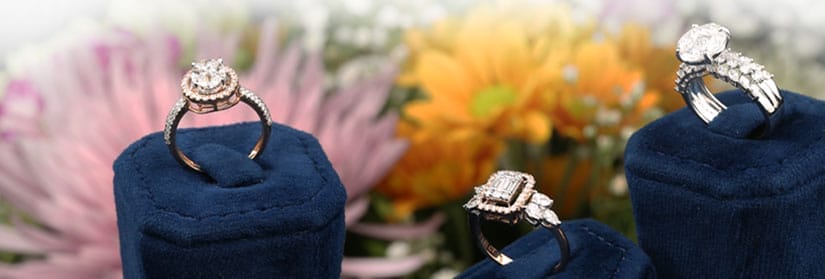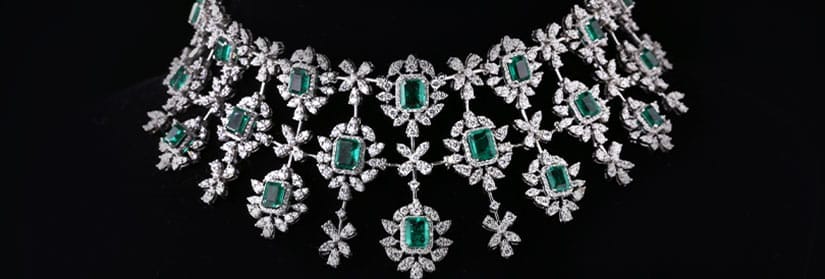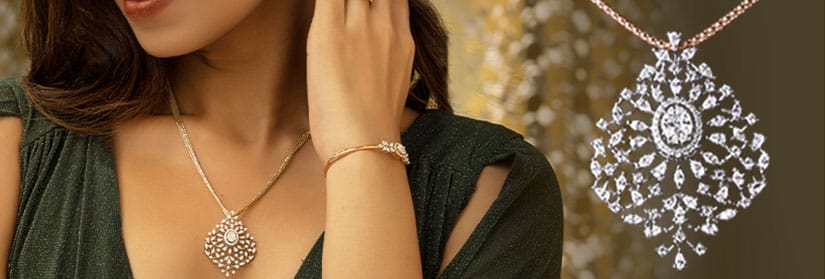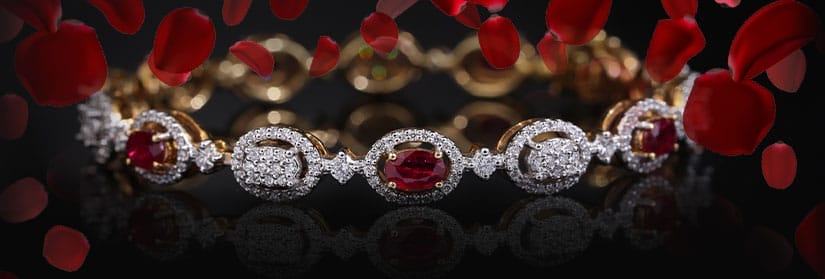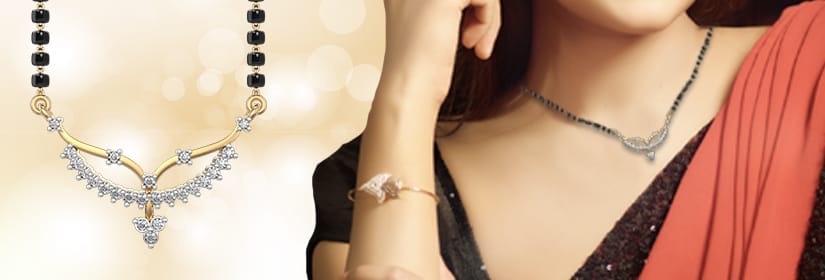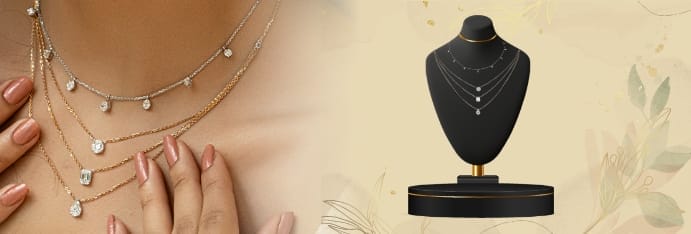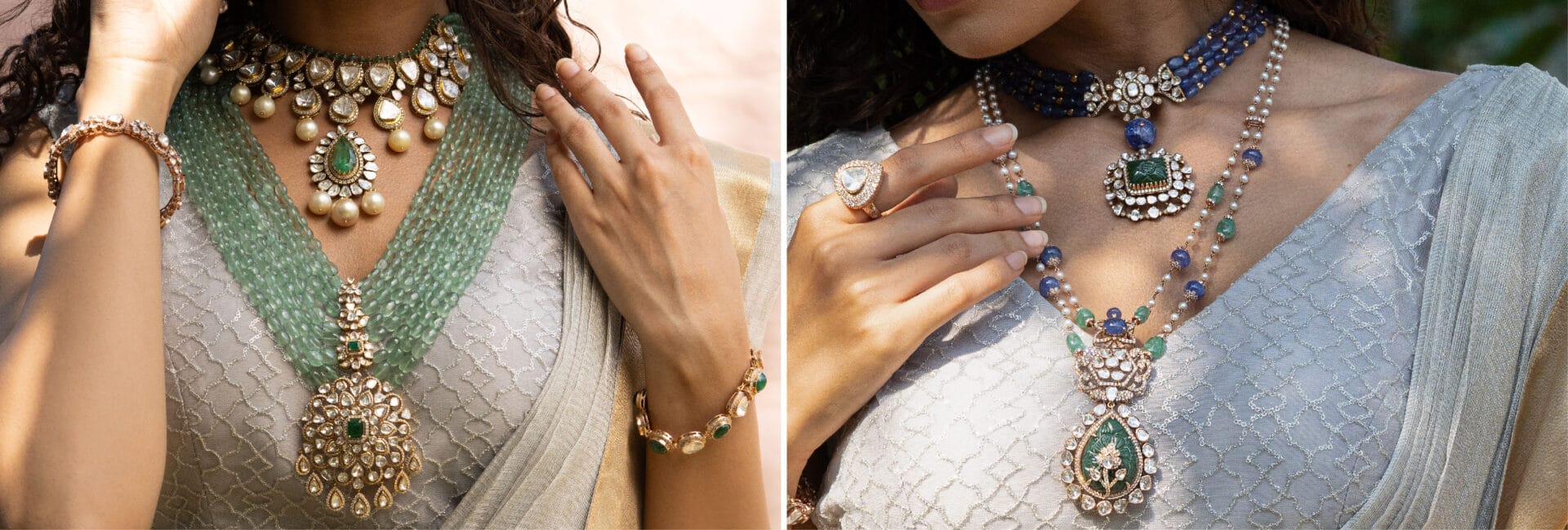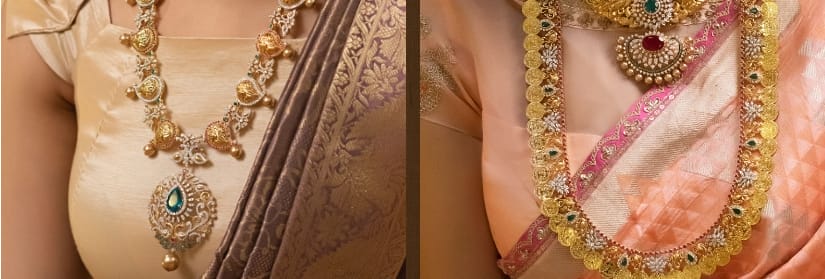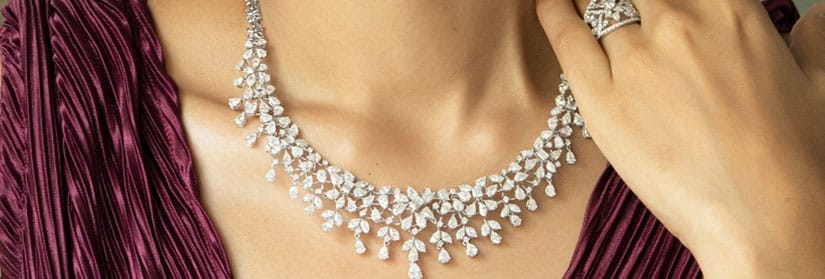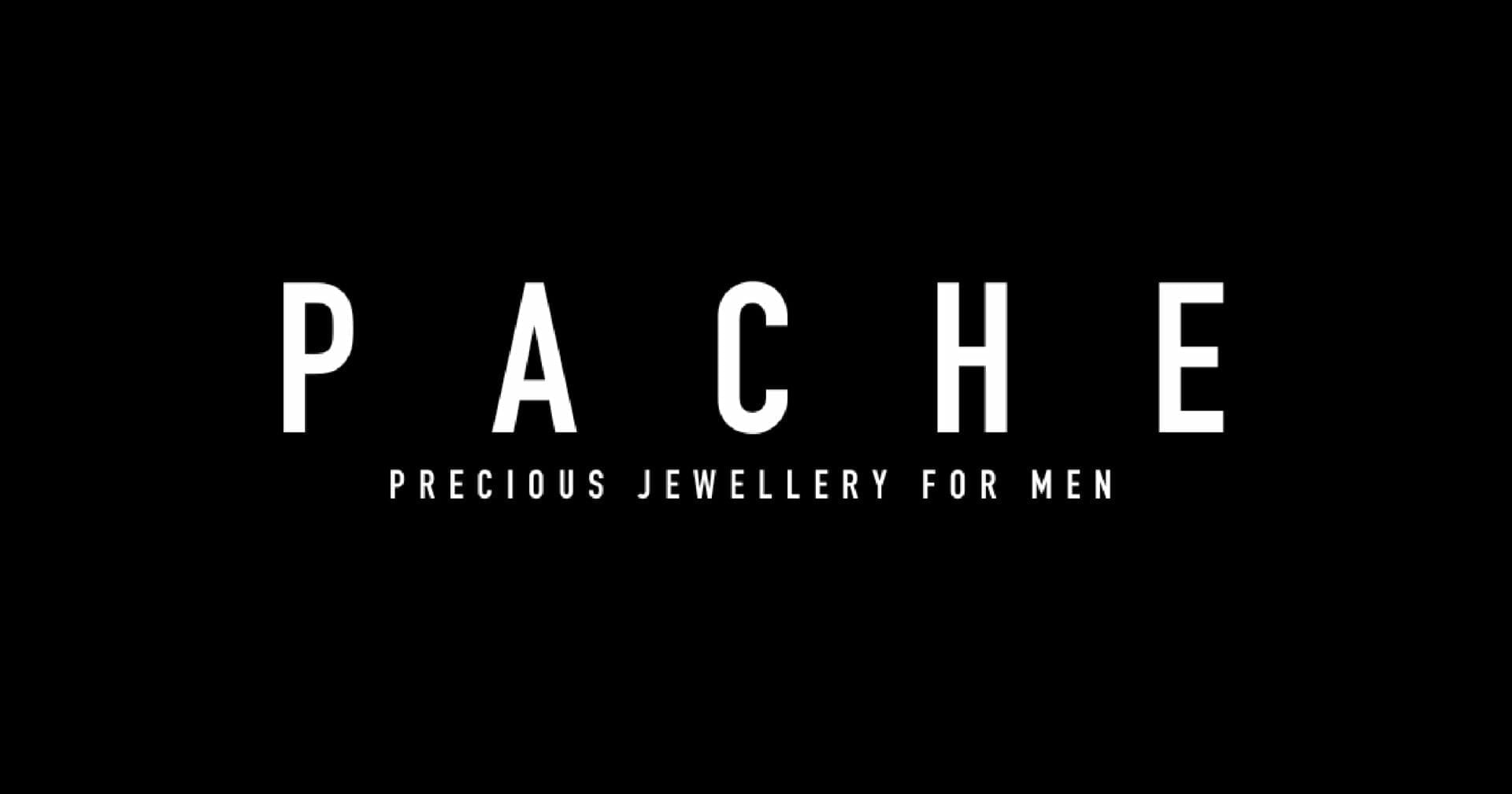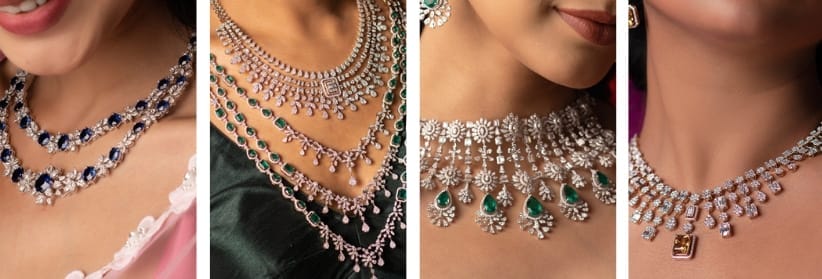What’s In A Dosham-Free Diamond?
What makes a “dosham-free” diamond is what is not present in it! Intriguing, isn’t it? “ Dosham” is a Sanskrit word which means flaw or defect. So, dosham-free diamonds are diamonds completely free of imperfections or spots.
You may wonder how diamonds have flaws. Diamonds are, without a doubt, the epitome of nature’s beauty. Therefore, it is hardly surprising that certain natural diamonds may possess minor flaws.
Call them birthmarks, formation defects, inclusions, blemishes, or natural cracks; these flaws make each diamond unique and special. These distinct markings are formed when the stone is still young in the process of becoming a precious gem. They occur due to disruptions in the diamond’s formation process caused by the extreme heat and pressure in the depths of the earth.
Detecting flaws in a diamond is not as simple as picking it up and examining it with the naked eye. In most cases, these inclusions are nearly unnoticeable and require the keen eye of trained experts to identify them under significant magnification.
So, what makes a diamond more precious than it already is? Do the inclusions add any value to the gem? Here’s where the term “Clarity” comes into play.

Clarity & Diamonds: What’s The Connection?
The absence of any flaws or inclusions defines the clarity of a diamond. In simple words, the fewer the inclusions, the higher the clarity and the bigger the value of this gemstone.
To understand this concept better, let’s elaborate on GIA’s (Gemological Institute of America) scientific and meticulous evaluation of the diamond’s internal structure. GIA’s categories range from Flawless (FL) to Included (I). Each category is based on:
- Location of the flaw
- Diamond’s size
- Number and nature of the flaws
- Their impact on the appearance of the stone
The stones are categorised only after they are individually examined under 10X magnification.
Basically, the clarity of the diamond refers to the presence of internal and external inclusions and the extent to which they are visible to the naked eye. There are two types of clarity characteristics:
- Inclusions (Flaws enclosed within the diamond)
- Blemishes ( External features)
IGI’s (International Gemological Institute) grading report depicts visual diagrams where the clarity characteristics are delineated in red for internal features and green for external components.
How to Read & Understand the Diamond Clarity Scale
Natural diamonds that form without inclusions are rare and often classified as ‘flawless’ on most grading scales. Such diamonds are among the most valuable in the world.
If you are trying to determine the best clarity for a diamond, remember that no diamond is perfectly pure. But the closer it comes to purity, the better its clarity.
Diamond Clarity Scale
There’s a rule of thumb when determining diamond clarity: No diamond is perfectly pure. With maximum purity comes maximum clarity. The diamond wholesale industry relies heavily on the 11-category scale to grade diamond clarity. For your understanding, here are six umbrella categories that you should rely on when trying to buy diamonds:
1. FL (Flawless)
Only about 2% of diamonds are classified as flawless. It is almost impossible to find completely flawless diamonds. These outstanding gemstones are labelled as “flawless” and possess remarkable worth in the diamond sector.
2. IF (Internally Flawless)
Internally flawless clarity denotes the presence of minuscule and clearly visible imperfections on the surface under 10x magnification. Only the rarest of diamonds are categorised under FL and IF and hence are the most expensive too.
3. VVS1, VVS2 (Very Very Slightly Included)
As the name suggests, VVS1 and VVS2 are diamonds with very small inclusions that are almost invisible under magnification and are identifiable only by trained professionals.
4. VS1, VS2 (Very Slightly Included)
Diamonds under this category possess flaws that the naked eye cannot see.
5. SI1, SI2 (Slightly Included)
The flaws in this category may be visible to the naked eye.
6. I1, I2, I3 (Included)
The diamond may have flaws that are visible to the naked eye.
Diamonds classified under the I clarity grade are seldom used in jewellery since the number of inclusions can make them vulnerable to breakage.
Flawless Diamonds: Are They Worth the Hype & Money?
Diamonds have become more than just glitter, glitz, and glamour. Besides, it is human nature to want to own the best of anything. Hence, when it comes to diamonds, it is often misconstrued that a flawless diamond is the best. Here’s a fact to break that myth: Flawless diamonds under the FL category do not always equate to the best-looking gems. Ironically, the inclusions in a diamond are what makes the stone unique.
In most cases, diamonds categorised under VS1 and 2 are just as good and clear as FL diamonds. However, they may cost far less than the FL category. So, the trick is to choose a diamond with low clarity but one that nevertheless appears clean to the naked eye. In short, go down the clarity scale but keep the diamond clean. This hack should help you save a lot of money and still get the most dazzling natural diamonds to adorn you.

Think Natural Diamonds, Think Khwaahish
Khwaahish, Chennai, is the place to be if you are looking for the highest quality VVS grade diamonds. Our expertise in these ultra-precious gems places us in a very fortunate position to deliver some of the rarest collections of diamond jewellery in Chennai. We are also the best destination for dosham-free, natural, VVS-grade diamonds for those who prefer a slightly low-quality option.
It’s important to note that the quality of a diamond is closely tied to its auspiciousness. VVS-grade diamonds are considered dosham-free. Visit our store or visit our website to learn more about dosham-free diamonds.
Let’s Wrap Up
The clarity of a diamond can be a tricky subject to grasp, but sometimes, knowing the basics can go a long way in helping you find the best diamond. Also, it is important to remember that the inclusions are more than blemishes. Each one actually represents your diamond’s unique journey through billions of years before it reaches you.



